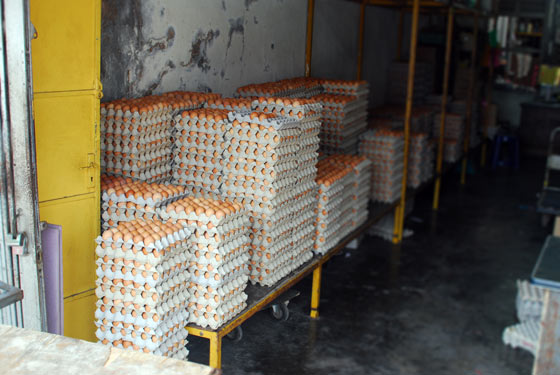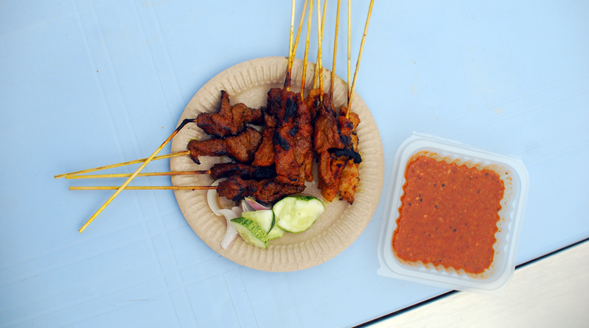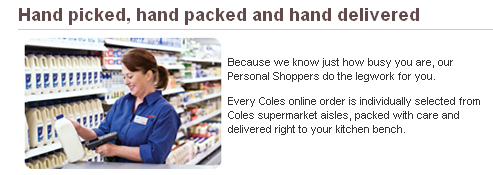
This is deep-fried pieces of boneless chicken coated in a crispy shell of batter, covered in mayonnaise straight from the jar. It’s a dish that the world’s food writers conveniently overlook when they heap well-deserved praise on restaurant Tek Sen in Penang because it doesn’t fit the clean narrative of tradition or authenticity that drives the de facto view of Malaysia through the lens of food magazines. There is no clear tradition of mayonnaise in Malay-Chinese cuisine but quite clearly, there should be. Tek Sen is licensed to drive that trend.
I didn’t eat at Tek Sen the last time that I was in Penang because it was too expensive. In hindsight that looks crazy, but four years ago, I was travelling around Asia on a budget of roughly $20 a day for two including transport and accommodation. It seems like a longer time ago. Spending $10 on a single meal was a tough decision when I could graze through several bowls of laksa a day for the same price. Now I spend more than $10 a day keeping myself sufficiently caffeinated. I eat at restaurants where $10 isn’t even an appropriate tip per person. The old me is probably horrified at the new me.
Maybe that is the only sign of being a moderately functioning adult.
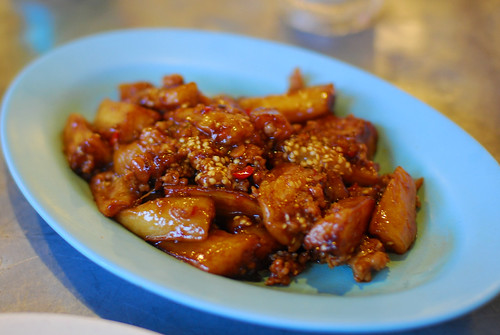
Eggplant with fermented bean paste
Four years on and the island is looking busier, more gentrified. The traffic is heavier and more Chinese shophouses are fenced off for renovation. The now World Heritage-listed core of Georgetown feels like it is beginning to take a similar path to Luang Prabang, where the centre of the city begins to hollow out for the needs of tourists, taking with it the atmosphere that tourists came for in the first place. There’s more buildings preserved as boutique hotels and the word “artisan” now attached to batik or carvings or basketry. It is still the greatest place on earth to eat on a fistful of dollars.
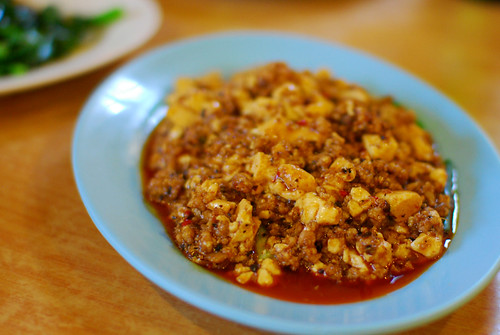
Mapo tofu has a relatively light touch of the numbing Szechuan mala sauce which lets the smoke from the wok work its way through.
Externally, Tek Sen remains much the same, a collection of reflective stainless tables encircled by battered metal stools within an airy, tiled shophouse. The menus smell like graphic design and are clearly translated into English, a small nod to gentrification.

Penang’s a different place when you’re meaningfully employed. I ate Tek Sen’s double-cooked pork on multiple occasions. The best $4 you’ll ever spend. The double-cooked pork – siew yuk – is sticky and sweet batons of pork belly, stirfried to add a dose of smoke. This is the only pork dish I’ve eaten where I’m keen to lick the thin slick of pork fat from the bottom of the plate. As much as this is the dish that drives people to Tek Sen rather than their liberal ideas about deep-frying and egg emulsions, Tek Sen has a menu where you can’t make mistakes.
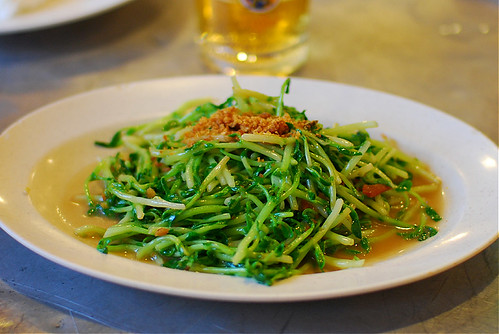
Pea shoots with dried, salted fish. It’s umami-salty and satisfying.
Eat everything. The small plates mean that even a party of two can easily work through five dishes. Four people could eat almost half the menu.
Location: 18-20 Carnarvon Street, Georgetown, Penang
